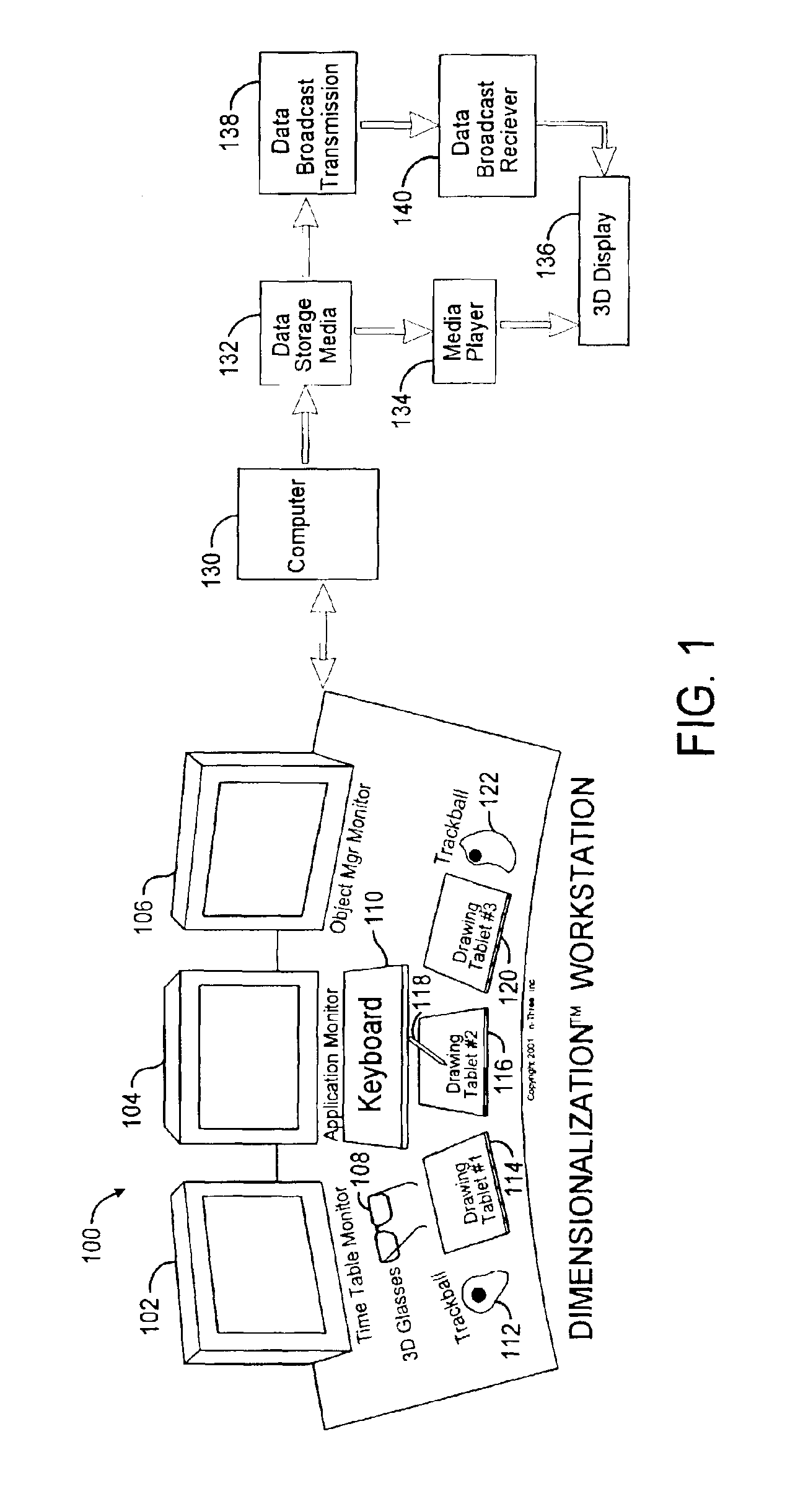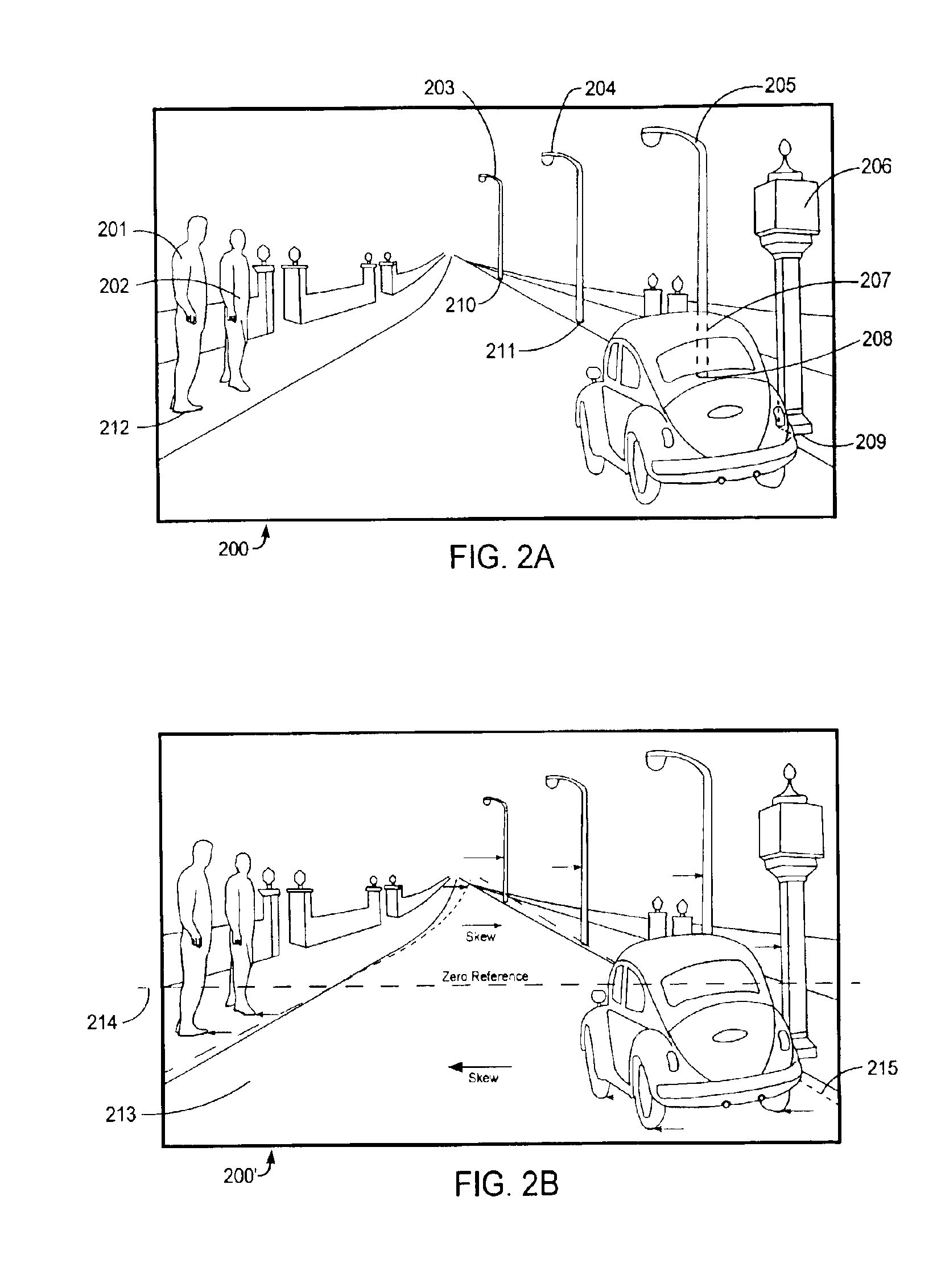Method for conforming objects to a common depth perspective for converting two-dimensional images into three-dimensional images
a technology of depth perspective and object, applied in the direction of image analysis, geometric image transformation, instruments, etc., can solve the problems of time-consuming and inapplicable processes, and achieve the effect of rapid and efficient conversion processing of motion pictures according to the present invention
- Summary
- Abstract
- Description
- Claims
- Application Information
AI Technical Summary
Benefits of technology
Problems solved by technology
Method used
Image
Examples
Embodiment Construction
[0062]Referring to FIG. 1, a workstation 100 according to the present invention includes one or more video monitors which provide a user of the DIMENSIONALIZATION™ process with an interactive interface through which a plurality of original images can be duplicated and rendered into three-dimensional images. More specifically, the interactive interface embodies a plurality of tools particularly adapted to facilitate rendering of three-dimensional complementary images such that each resulting complementary image and its corresponding original image provide a stereo pair of images for a three-dimensional image. It should be noted however that the scope of the present invention additionally includes creating or rendering multiple frames, rather than a single frame.
[0063]The exemplary workstation 100 shown in FIG. 1 includes a time table monitor 102, an application monitor 104, an object manager monitor 106, three-dimensional glasses 108 and one or more user input mechanisms such as a ke...
PUM
 Login to View More
Login to View More Abstract
Description
Claims
Application Information
 Login to View More
Login to View More - R&D
- Intellectual Property
- Life Sciences
- Materials
- Tech Scout
- Unparalleled Data Quality
- Higher Quality Content
- 60% Fewer Hallucinations
Browse by: Latest US Patents, China's latest patents, Technical Efficacy Thesaurus, Application Domain, Technology Topic, Popular Technical Reports.
© 2025 PatSnap. All rights reserved.Legal|Privacy policy|Modern Slavery Act Transparency Statement|Sitemap|About US| Contact US: help@patsnap.com



